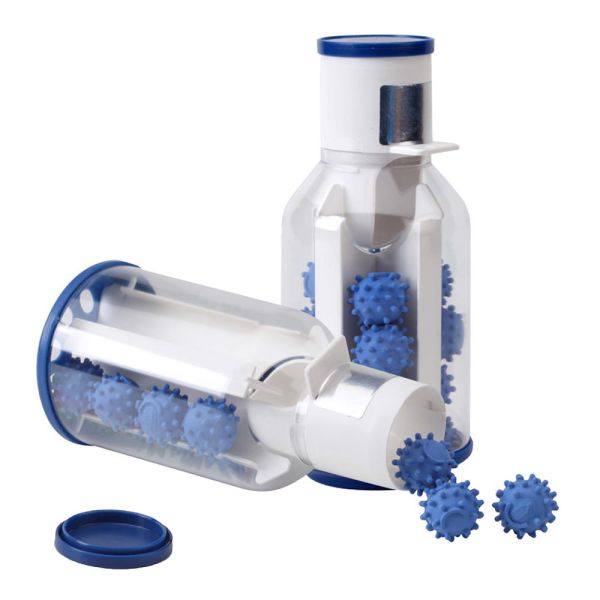How to Clean Vacuum Cleaner Hose
How to Clean Your (Basic) Vacuum Cleaner Hose: A Step-by-Step Guide
 Cleaning your vacuum hose is essential for maintaining optimal performance and ensuring your vacuum lasts for years. Over time, dust, debris, and hair can build up inside the hose, reducing suction power and efficiency. Regular cleaning can help prevent clogs and maintain the machine’s effectiveness.
Cleaning your vacuum hose is essential for maintaining optimal performance and ensuring your vacuum lasts for years. Over time, dust, debris, and hair can build up inside the hose, reducing suction power and efficiency. Regular cleaning can help prevent clogs and maintain the machine’s effectiveness.
Here's a detailed guide to help you keep your central vacuum or household vacuum cleaner in top condition. By dedicating a bit of time to maintenance, you can extend the lifespan of your appliance and enjoy cleaner living spaces.
Step 1: Detach the Hose Safely
Start by carefully detaching the hose from your vacuum cleaner. The method to do this may vary depending on your vacuum's brand and model, but it usually involves either twisting the hose or pressing a release button. Take a moment to examine your vacuum to find the correct mechanism.
Remember, never force the hose off; if it doesn't release easily, it’s best to consult your user manual for guidance. This will prevent any damage to the vacuum. Additionally, always ensure the vacuum is unplugged from the power outlet to avoid any electrical mishaps. Safety should be your top priority during this process. Taking these precautions will help maintain the longevity and efficiency of your vacuum cleaner.
Step 2: Unclog and Remove Debris
Lay the hose flat on the ground and carefully inspect it for any visible clogs or debris that might be obstructing the flow. Take your time to thoroughly check for any small pieces that could be lodged inside. Once you've identified any blockages, use a thin, long object like the handle of a broom or mop to gently push out any obstructions.
It's important to be cautious and apply slow, steady pressure to avoid damaging the hose. Excessive force could lead to tearing, which would require more extensive repairs or even replacement. Taking these careful steps will help ensure the hose remains in good condition and functions properly. Try central vacuum bals for a light maeintenance
Step 3: Wash the Hose Thoroughly
Fill a sink with about four inches of warm water, ensuring it's comfortably warm to the touch, and add a few drops of dish soap or a mild detergent. Stir the water gently to create suds. Submerge the hose completely in the sudsy water, allowing the water to flow through and clean its interior folds thoroughly. Let it sit for a few minutes to loosen any stubborn grime.
For added sanitation, mix half a cup of baking soda with two cups of distilled white vinegar. Pour the baking soda into the hose first, followed by the vinegar, and watch as the natural fizzing action helps dislodge dirt and debris. This effervescent combination not only aids in cleaning but also helps eliminate bacteria and odors without the need for harsh chemicals, leaving your hose fresh and ready for use.
Step 4: Scrub Using a Bottle Cleaning Brush
For stubborn grime inside the hose, use a bottle cleaning brush. This tool, with its long handle and densely packed bristles, is specifically designed to reach deep into the folds where dirt tends to accumulate.
The fine bristles work effectively to dislodge even the most persistent grime that can build up over time. When using the brush, carefully maneuver it inside the hose, twisting gently so as not to cause any damage to the material. This thorough cleaning method ensures that your hose remains in good condition and free from blockages, ultimately extending its usability and efficiency.
 Step 5: Rinse the Hose
Step 5: Rinse the Hose
Rinse the hose thoroughly using tap water to ensure it is completely clean and free of any contaminants. Hold the hose in a 'U' shape under the faucet to make sure that water flows through it effectively, pushing out any remaining soap or debris that might have accumulated inside. Adjust the water pressure to a steady flow, as too much pressure might damage the hose, while too little might not effectively remove all particles.
Make sure every part of the hose is thoroughly rinsed by moving it around under the faucet. Shake the hose gently to help dislodge any loose particles, rotating it slightly as you do so to cover all angles and ensure no area is missed. Check both ends of the hose carefully to confirm that no residues are left behind, thus ensuring complete cleanliness and readiness for its next use. If necessary, repeat the process to guarantee that the hose is in optimal condition for future tasks.
Step 6: Dry the Hose Completely
Before reattaching the hose, ensure it’s completely dry to prevent mold growth. Mold can develop quickly in damp conditions, potentially causing health issues and damage to the hose over time. To dry it properly, hang the hose over a shower curtain rod or a similar fixture, allowing any remaining water to drain out.
The height and sturdiness of a shower rod usually make it an ideal spot for this task. To expedite the process, you can shake the hose lightly, which encourages any trapped water droplets to escape. Additionally, rotating the hose occasionally can ensure even drying. Let it air dry for several hours, or even overnight if possible, before proceeding with reinstallation to ensure it is thoroughly dry.
Troubleshooting and Maintenance Tips
Once you have reattached the hose, test your vacuum cleaner to assess improvements in suction power and any reduction in odor. If the issues persist, it might be wise to explore other potential problems. These could include motor malfunctions, which may cause a decline in performance, or worn-out filters that may require replacement to ensure optimal operation. Regular maintenance is key to keeping your vacuum performing at its best.
This includes cleaning the hose and changing filters and bags to prevent blockages and ensuring that all components are functioning properly. Additionally, regularly inspecting and cleaning your vacuum can significantly extend its lifespan while contributing to a healthier home environment by efficiently removing dust and allergens. By taking these proactive steps, you'll maintain a cleaner living space and ensure your vacuum remains a reliable tool for household cleaning.




Log In
Create New Account